Pritam Singh呼吁政府考虑实施1300 新元的全民最低工资标准
他说,政府所采取的行业办法需要“太长时间”来落实。
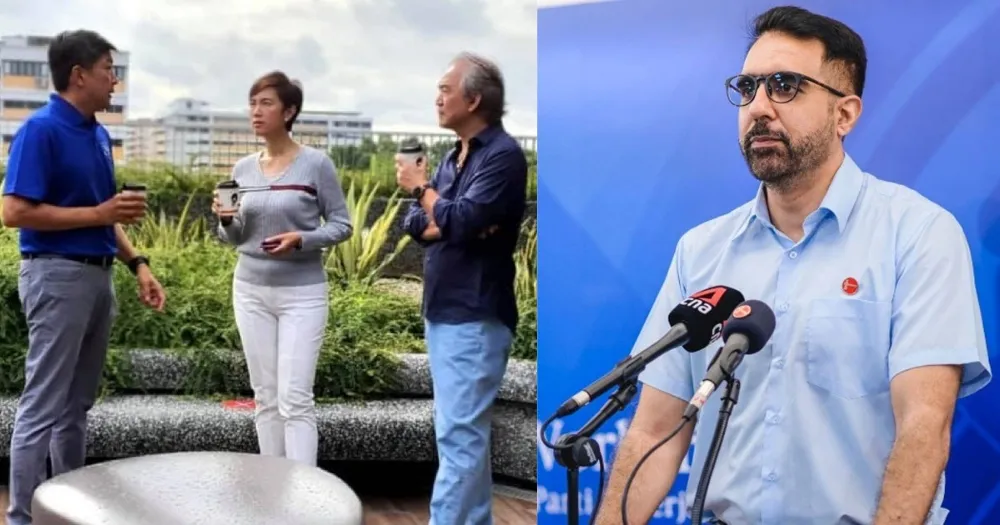
他说,政府所采取的行业办法需要“太长时间”来落实。

Implementation challenges include fiscal costs (e.g., GST reduction, caregiver allowances) and political resistance to reforms like GRC abolition.
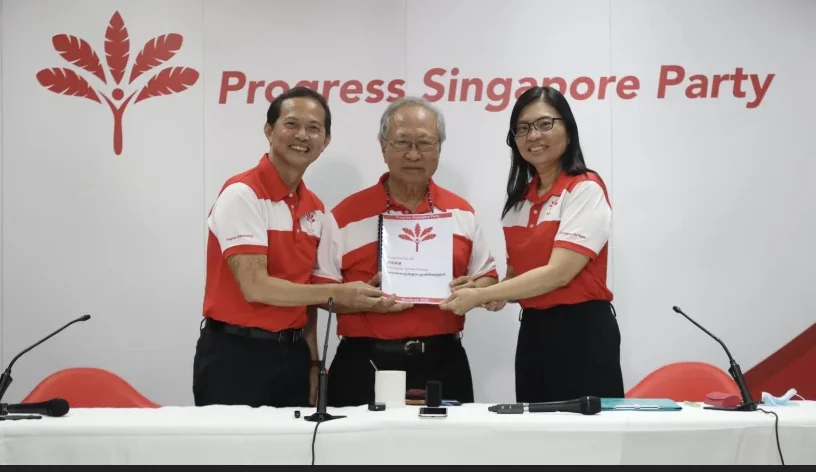
The Progress Singapore Party (PSP) released its manifesto for Singapore's 2025 General Election, titled “Progress for All,” outlining over 60 policy proposals to address key national issues.
The manifesto focuses on building a fair society, ensuring dignified living standards, providing diverse educational pathways, and strengthening democratic institutions.
Below is a detailed, reorganized summary of the manifesto’s key points, structured for clarity and coherence, based on the provided document.
The PSP addresses Singapore’s escalating cost of living, driven by a 18% rise in the Consumer Price Index (CPI) from July 2020 to February 2025, with specific increases in hawker food (20%), public transport (20%), and water prices (18%). The GST hike from 7% to 9% in 2024 and soaring HDB resale prices (50% increase from Q2 2020 to Q4 2024) exacerbate the burden, while median wages have only risen 21% from $4,534 to $5,500.
| Policy Area | Key Proposal | Intended Impact |
|---|---|---|
| GST | Reduce to 7%, exempt essentials | Ease regressive tax burden |
| Land Costs | Defer HDB land costs, spread land sales revenue | Lower housing and business costs |
| Hawker Reforms | Fixed/low rents, phase out SEHCs | Keep food prices affordable |
| Healthcare | Nationalize insurance, centralize drug procurement | Reduce medical expenses |
The PSP critiques the BTO system’s long waiting times and rising resale prices (50% increase from Q2 2020 to Q4 2024), driven by land costs (60% of BTO costs) and lease decay concerns. The government’s subsidies to keep BTO prices affordable increase fiscal burdens, necessitating a rethink of housing policies.
| Policy Area | Key Proposal | Intended Impact |
|---|---|---|
| AHS | Exclude land cost for owner-occupied flats | Affordable housing, protect retirement savings |
| Singles | Lower age to 28 for BTO/resale flats | Meet young Singaporeans’ housing needs |
| Supply | Build ahead of demand, repurpose properties | Reduce waiting times |
| Rentals | Millennial Apartments Scheme | Flexible housing for youth |
With foreign workers comprising 39% of the workforce, the PSP aims to prioritize Singaporeans while ensuring fair competition and better work-life balance, addressing overwork (90% work beyond official hours) and wage stagnation.
| Policy Area | Key Proposal | Intended Impact |
|---|---|---|
| Wages | $2,250/month minimum wage | Ensure dignified living |
| Foreign Workers | EP quotas, levy, higher salary threshold | Prioritize Singaporeans |
| Protections | No non-compete for retrenched, statutory benefits | Enhance job security |
| Leave | Equal 15-week parental leave | Promote gender equity |
The PSP seeks to simplify and strengthen social support, reducing reliance on complex schemes and supporting caregivers, seniors, and healthcare needs.
| Policy Area | Key Proposal | Intended Impact |
|---|---|---|
| Redundancy | 75% salary for 6 months | Financial security for unemployed |
| Caregivers | $1,250/month for child caregivers | Support unpaid contributions |
| Seniors | Double Silver Support payouts | Dignified retirement |
| Healthcare | Expand MediSave, fund ART | Reduce out-of-pocket costs |
Despite Singapore’s top PISA 2022 rankings, the PSP critiques over-reliance on tuition ($104.80/month household expenditure in 2023) and high-stakes exams, which foster fear of failure (2018 PISA). The system should offer diverse pathways and equal opportunities.
| Policy Area | Key Proposal | Intended Impact |
|---|---|---|
| Curriculum | Optional PSLE, holistic focus | Reduce exam stress, broaden skills |
| Schools | Diverse sizes, smaller classes | Meet varied student needs |
| Mental Health | Annual assessments, more counsellors | Support student/teacher well-being |
| Access | Limit foreign grants, expand vocational paths | Prioritize Singaporeans, diversify entry |
The PSP addresses concerns over the PAP’s parliamentary dominance, lack of checks and balances, and recent policy missteps (e.g., Covid-19 dormitory outbreaks, SimplyGo reversal). It seeks to enhance transparency and accountability.
| Policy Area | Key Proposal | Intended Impact |
|---|---|---|
| Transparency | FOIA, declassify documents, asset declarations | Enhance public access, trust |
| Electoral System | Abolish GRCs, reform boundaries | Ensure fairer elections |
| Media | Liberalize laws, independent committee | Foster diverse, quality journalism |
| Governance | Depoliticize PA, non-partisan Speaker | Strengthen impartial institutions |
Launched ahead of the May 3, 2025, election, the PSP’s manifesto builds on parliamentary proposals since 2020, reflecting resident feedback and critiques of PAP policies.
The party emphasizes its role in holding the government accountable, citing past PAP responses (e.g., Pioneer Generation Package) to opposition gains.
Implementation challenges include fiscal costs (e.g., GST reduction, caregiver allowances) and political resistance to reforms like GRC abolition.
The PSP’s focus on affordability, housing, and governance aligns with public concerns, but success depends on electing at least 33 opposition MPs to block constitutional amendments.
If you have no time to read all manifestos, just read this summary.
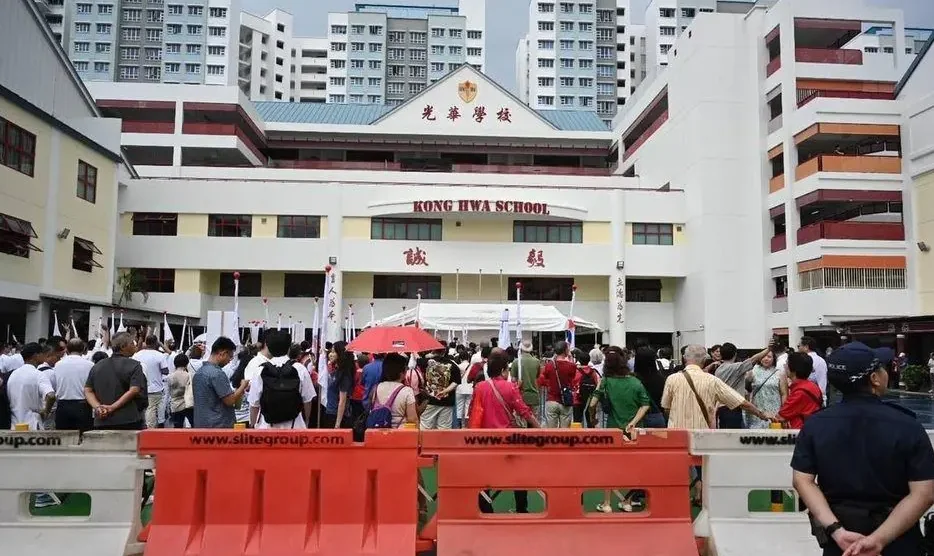
The manifestos of the People’s Action Party (PAP), Workers’ Party (WP), Progress Singapore Party (PSP), and Singapore Democratic Party (SDP) for the 2025 Singapore General Election reveal a spectrum of priorities, as summarized in the following table:
| Aspect | PAP | WP | PSP | SDP |
|---|---|---|---|---|
| Vision | Stability and continuity; incremental improvements. | Pragmatic reform; balanced change. | Bold transformation; radical reforms. | Social justice and equity; transformative democratic change. |
| Cost of Living | Enhances Assurance Package, CDC vouchers, maintains GST at 9% with offsets. | GST exemptions for essentials, National Minimum Wage ($1,600). | Reduce GST to 7%, exempt essentials, defer HDB land costs. | Abolish GST on essentials, tax top 1%, reinstate estate duty, minimum wage. |
| Housing | Over 50,000 new HDB flats, Shorter Waiting Time flats, VERS rejuvenation. | 70-year BTO leases, universal buy-back schemes, affordability focus. | Affordable Homes Scheme (AHS), Millennial Apartments Scheme. | Non-Open Market (NOM) Scheme with $270,000 HDB price cap, sustainable VERS, more flats. |
| Jobs and Wages | Supports PMETs, fair employment safeguards, Progressive Wage Credit. | EP reforms, SkillsFuture enhancements, local talent priority. | $2,250 minimum living wage, EP quotas, retrenchment benefits. | Minimum wage, Talent Track Scheme for foreign PMETs, reduce foreign labor, scrap CPF Minimum Sum. |
| Social Safety Net | Reinforces ComCare, Silver Support, Workfare enhancements. | Expands healthcare subsidies, simplifies assistance, retiree support. | $1,800 minimum living income, caregiver allowances, MediSave expansion. | National Health Investment Fund (NHIF), free maternal/pediatric care, 10-point Malay community plan, gender equality initiatives. |
| Education | Customized education, SPED expansion, lifelong learning. | Class size caps at 23, holistic education, later school start times. | 10-year through-train program, class size reduction, local student priority. | Abolish PSLE, reduce class sizes, holistic curriculum, address socio-economic disparities. |
| Governance | Maintains stability, anti-corruption, improves communication. | Office of Ombudsman, standing committees, GRC abolition. | Freedom of Information Act, asset declaration, GRC abolition. | Reduce ministerial salaries, reform POFMA, constitutional reforms for civil liberties, divest GLCs, regional democratic partnerships. |
| Environment | New parks, marine parks, transport infrastructure. | Renewable energy targets (50% by 2040), forest conservation. | Environmental Impact Assessments, hasten renewables. | Strengthen Paris Agreement, EV incentives, oppose 10 million population, enforce haze act, reduce single-use packaging. |
| Feasibility | Highly feasible; leverages existing systems. | Feasible; builds on existing frameworks. | Ambitious but risky; requires significant changes. | Highly ambitious; faces significant fiscal and political challenges. |
| Voter Appeal | Appeals to conservative voters, older generations, middle to upper-income brackets valuing stability and economic growth. | Attracts middle-class families, younger voters concerned about housing and education, seeking a stronger check on PAP. | Draws younger demographics, lower-income workers, reformists willing to risk significant change. | Appeals to lower-income groups, youth, and reformists frustrated with inequality and governance restrictions, but may alienate moderates due to radicalism. |
This table highlights the diversity in approach, with PAP focusing on continuity, WP on balanced reform, PSP on transformative change, and SDP on social justice and democratic overhaul.
Addressing Public Concerns:
Housing:
Governance and Democracy:
Economic Growth:
Social Safety Net:
PAP: Appeals to voters valuing economic stability, strong governance, and proven leadership, attracting conservative voters, older generations, and middle to upper-income brackets. Its continuity is robust but may seem out-of-touch with reformists.
WP: Offers a credible, pragmatic alternative, appealing to middle-class families, younger voters concerned about housing and education, and those desiring a stronger check on PAP. Its balanced approach is feasible but may lack transformative vision.
PSP: Presents a bold platform for change, drawing support from younger demographics, lower-income workers, and reformists willing to risk significant change. Its ambition is appealing but faces feasibility challenges.
SDP: Champions social justice and democratic reform, appealing to lower-income groups, youth, and reformists frustrated with inequality and governance restrictions. Its radical proposals (e.g., abolish PSLE, scrap CPF Minimum Sum) resonate with those seeking systemic change but risk alienating moderates due to limited electoral track record and vague costings.
The election outcome on May 3, 2025, will hinge on voter priorities—stability versus change—and how each party builds trust amid economic and social challenges.
The manifesto focuses on reducing economic inequality, enhancing social welfare, reforming education, and strengthening democratic governance.
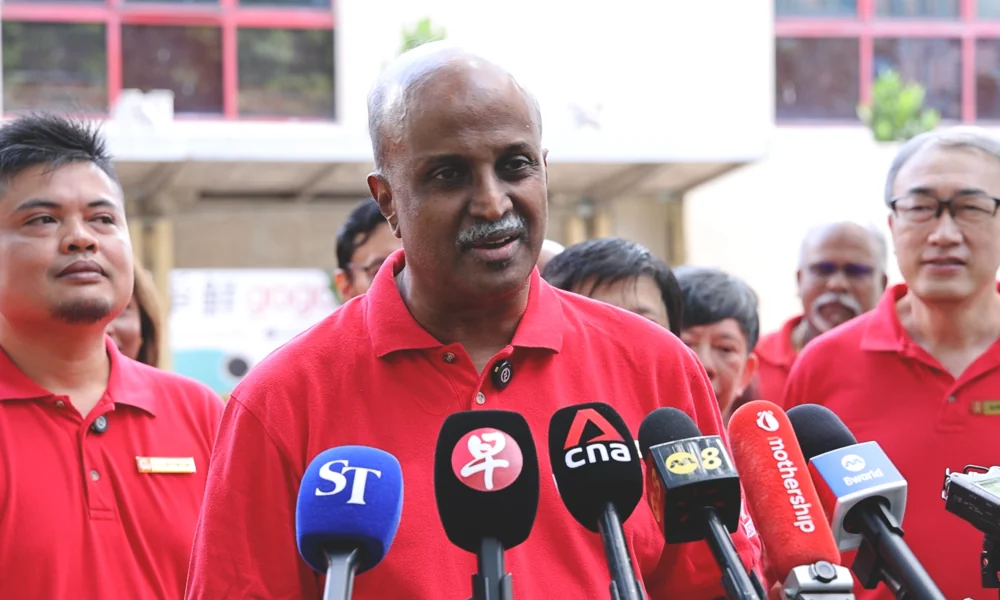
The Singapore Democratic Party (SDP) released its manifesto for Singapore's 2025 General Election under the slogan “Thrive, Not Just Survive,” presenting a comprehensive set of policy proposals to address key national issues.
The SDP highlights Singapore’s rising cost of living, driven by high housing prices, healthcare costs, and regressive taxation like the Goods and Services Tax (GST). The party critiques policies that burden the middle and lower classes while wealth concentrates among the elite.
| Policy Area | Key Proposal | Intended Impact |
|---|---|---|
| Taxation | Abolish GST on essentials, tax top 1%, reinstate estate duty | Reduce regressive tax burden, fund social programs |
| Salaries | Cut ministerial salaries | Redirect funds to aid the poor |
| Wages | Introduce minimum wage | Ensure dignified living standards |
| Reserves | Increase transparency | Promote equitable use of public funds |
The SDP criticizes the high cost of Housing and Development Board (HDB) flats, driven by land costs and the 99-year lease decay issue. The party proposes restructuring the housing system to prioritize affordability and sustainability.
| Policy Area | Key Proposal | Intended Impact |
|---|---|---|
| NOM Scheme | Cap HDB flats at S$270,000, exclude land costs | Make housing affordable, curb speculation |
| VERS | Sustainable en-bloc redevelopment | Address lease decay, maintain affordability |
| Supply | Build more flats | Reduce waiting times, stabilize prices |
The SDP aims to prioritize Singaporeans in employment, reduce reliance on foreign labor, and address wage stagnation, particularly for Professionals, Managers, Executives, and Technicians (PMETs), in a workforce where foreign workers comprise ~39% (2024 data).
| Policy Area | Key Proposal | Intended Impact |
|---|---|---|
| Wages | Minimum wage | Ensure fair compensation |
| Employment | Talent Track Scheme, prioritize Singaporeans | Protect local job opportunities |
| Foreign Labor | Reduce reliance | Increase jobs for Singaporeans |
| CPF | Scrap Minimum Sum Scheme | Enhance retirement flexibility |
The SDP seeks to strengthen social support, focusing on healthcare, marginalized communities, and gender equality, replacing complex schemes with accessible programs.
| Policy Area | Key Proposal | Intended Impact |
|---|---|---|
| Healthcare | NHIF, free maternal/pediatric care | Reduce medical costs, support families |
| Malay Community | 10-point upliftment plan | Address inequality, promote inclusion |
| Gender Equality | Women’s Wing initiatives | Enhance women’s rights, work-life balance |
The SDP critiques Singapore’s exam-driven education system for fostering stress and inequality, proposing reforms to prioritize holistic development.
| Policy Area | Key Proposal | Intended Impact |
|---|---|---|
| PSLE | Abolish PSLE | Reduce exam stress, promote holistic growth |
| Class Sizes | Smaller classes | Enhance personalized learning |
| Curriculum | Focus on critical thinking, creativity | Prepare students for diverse futures |
| Equity | Address disparities | Ensure equal educational opportunities |
The SDP addresses concerns over the People’s Action Party’s (PAP) dominance and restrictions on freedom of expression, seeking to enhance transparency and civil liberties.
| Policy Area | Key Proposal | Intended Impact |
|---|---|---|
| Salaries | Reduce ministerial salaries | Promote public service ethos |
| Free Speech | Reform POFMA, protect rights | Enhance democratic expression |
| Constitution | Strengthen civil liberties | Foster open society |
| GLCs | Divest inefficient GLCs | Promote market competition |
| Regional Ties | Democratic partnerships | Strengthen regional democratic values |
The SDP emphasizes environmental sustainability, addressing climate change and resource management in a densely populated nation.
| Policy Area | Key Proposal | Intended Impact |
|---|---|---|
| Climate | Strengthen Paris Agreement commitments | Reduce carbon footprint |
| EVs | Incentivize EV adoption | Lower transportation emissions |
| Population | Oppose 10 million target | Ensure sustainable growth |
| Haze | Enforce Transboundary Haze Act | Address regional pollution |
| Waste | Reduce single-use packaging | Minimize environmental impact |
Launched ahead of the May 3, 2025, General Election, the SDP’s manifesto reflects its social liberal democratic vision, emphasizing affordability, equity, and sustainability.
Key proposals, such as the S$270,000 HDB price cap and opposition to a 10 million population, include specific figures, but most policies (e.g., building more flats, minimum wage, class size reductions) lack quantitative details, such as numerical targets or cost estimates.
Implementation challenges include fiscal costs (e.g., NHIF, GST exemptions), political resistance to bold reforms (e.g., PSLE abolition, GLC divestment), and the SDP’s limited electoral success (no seats since 1997).
The PAP, WP, SDP and PSP have rolled out their housing manifestos, each claiming to fix voters' housing concerns. But do they deliver?
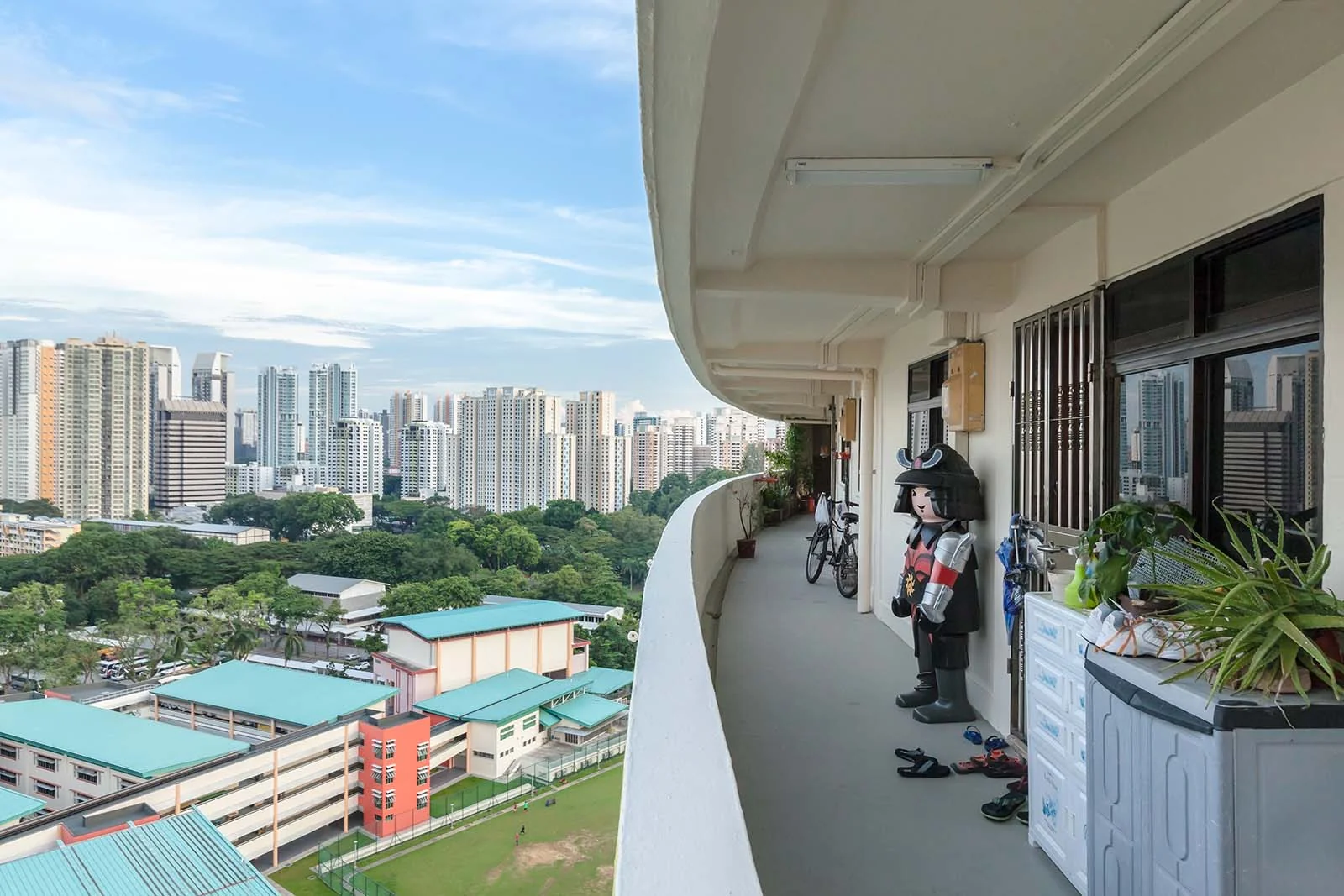
With HDB resale prices up 50% since 2020 and BTO waiting times stretching to five years, affordability and access are strangling young couples, singles, and retirees alike.
The 99-year lease model, once a cornerstone of stability, now looms as a ticking time bomb for ageing flats.
The PAP, WP, SDP and PSP have rolled out their housing manifestos, each claiming to fix voters' housing concerns.
But do they deliver?
Flood the market with supply, tweak eligibilit, and tackle lease decay head-on
The PAP, Singapore’s ruling juggernaut, promises to build over 50,000 new HDB flats in three years—enough for an entire Ang Mo Kio town.
They’re doubling down on Shorter Waiting Time flats to cut BTO delays, exploring options for higher-income couples and singles, and pushing the Voluntary Early Redevelopment Scheme (VERS) to rejuvenate old estates like Kallang-Whampoa.
More flats don’t automatically mean cheaper flats
The Housing Price Index (HPI) ratio—median flat price to median income—hovers around 5-6, far from affordable for a $80,000-a-year household eyeing a $400,000 4-room BTO.
PAP’s reliance on grants, like the Enhanced CPF Housing Grant, is a band-aid, not a cure, when resale prices have soared 50% in five years.
VERS sounds promising but lacks teeth—its voluntary nature and vague compensation details leave residents guessing, unlike the more decisive Selective En bloc Redevelopment Scheme (SERS).
Expanding access for singles and higher-income groups is inclusive but risks diverting resources from lower-income families who can’t even dream of a $500,000 resale flat.
And while 50,000 flats sound impressive, global supply chain crunches and labor shortages could derail delivery, as seen in past construction delays.
Stability, not affordability
PAP’s plan is feasible, backed by HDB’s machine and approximately $1.2 trillion in reserves, but it’s incremental, not transformative.
PAP is betting on stability, not affordability, leaving young Singaporeans stuck in a cycle of grants and grit.
The Workers’ Party takes a different tack, zeroing in on affordability with a promise to slash the HPI ratio to 3.0 or below—meaning a 4-room flat for a median-income family would cost no more than $240,000.
They propose 70-year BTO leases at lower prices, with an option to top up to 99 years, and a universal buy-back scheme to rescue retirees from depreciating flats.
To sweeten the deal, WP wants HDB to reacquire coffee shops and cap rents to inflation, easing living costs in estates.
Gutsy policy proposals but no clarity on how to fund it
WP's proposed housing policies speak directly to middle-class families and retirees crushed by prices.
An HPI of 3.0 would be a game-changer, making homeownership a reality, not a pipe dream.
The 70-year lease option is clever, offering flexibility for cash-strapped buyers, while the buy-back scheme tackles lease decay with precision, ensuring grannies in 40-year-old flats aren’t left penniless.
A very costly proposal
But ambition comes at a cost.
Dropping the HPI to 3.0 means slashing flat prices by 40-50%, requiring massive subsidies or land cost write-offs that could dent fiscal reserves or spike taxes.
The buy-back scheme, while noble, could cost billions if applied universally, and WP’s manifesto is mum on funding.
Worse, there’s no clear plan to boost flat supply, leaving waiting times untouched—a glaring blind spot when young couples are begging for faster BTOs.
WP’s heart is in the right place, but its wallet might not be.
The Progress Singapore Party swings for the fences with its Affordable Homes Scheme (AHS), scrapping BTOs to sell flats without land costs—recovered only on resale. This could halve prices, dropping a $400,000 flat to $200,000.
Singles aged 28+ get to buy 2- and 3-room flats anywhere, more flats will be built based on demand, and a Millennial Apartments Scheme offers short-term rentals in prime spots for young folks.
It’s a bold, youth-centric vision, promising to break the affordability curse and free CPF savings for retirement.
Revolutionary if it works, catastrophic if it flops
AHS is a stroke of genius on paper, tackling the root of high prices: land costs, which eat up half a flat’s value.
Letting singles buy at 28 in any estate is a nod to a growing demographic—30% of adults are single—while rental apartments cater to millennials delaying marriage.
But genius comes with glitches.
Deferring land costs guts government revenue ($20 billion yearly from land sales), risking budget shortfalls or reserve dips that Singapore’s fiscal hawks will savage.
Resale markets could tank as cheap new flats flood in, rattling homeowners’ wealth.
AHS demands a complete HDB overhaul, a bureaucratic nightmare to implement.
The Millennial Scheme sounds sexy but faces land scarcity in prime areas, limiting scale.
And PSP’s silence on lease decay is a fatal flaw—retirees with 30 years left on their flats get no lifeline.
It’s a high-stakes gamble: revolutionary if it works, catastrophic if it flops.
Slash prices with NOM flats, prioritize families, and secure retirements
The Singapore Democratic Party (SDP) proposes a transformative Non-Open Market (NOM) Scheme, selling HDB flats at cost—excluding land costs—for as low as S$70,000 (2-room) to S$240,000 (5-room).
NOM flats can’t be resold on the open market, only back to HDB, curbing speculation.
The Young Families Priority Scheme (YFPS) fast-tracks flat access for couples with kids, while singles, single parents, and low-income renters get broader eligibility.
An enhanced Lease Buy-Back Scheme offers seniors inflation-adjusted annuities, and a buffer stock of flats aims to slash waiting times.
A sophisticated Vickrey-Clarke-Groves (VCG) balloting system promises efficient allocation.
Affordability and inclusivity with a side of complexity
SDP’s NOM Scheme is a masterstroke for affordability, potentially cutting a 4-room flat from S$400,000 to S$160,000, freeing CPF savings for retirement and family needs.
YFPS directly tackles Singapore’s dismal 0.78 Total Fertility Rate by prioritizing young families, while inclusive policies for singles and single parents resonate with 30% of adults who are single.
The buffer stock and VCG system could shrink waiting times, addressing a key pain point.
The annuity-based Lease Buy-Back is a lifeline for retirees, ensuring dignity without depleting equity.
Bold but tricky to execute
NOM’s cost-recovery model, while appealing, risks government revenue losses similar to PSP’s AHS, though SDP’s resale restrictions may stabilize markets better.
Converting existing flats to NOM could spark legal or financial disputes over compensation.
The VCG system, while innovative, may confuse applicants unused to bidding premiums, and maintaining a buffer stock demands precise demographic forecasting to avoid oversupply.
Funding grants for low-income households (up to S$60,000) and annuities could strain reserves without clear fiscal plans.
SDP’s vision is bold and inclusive but hinges on complex execution and public buy-in.
Singapore’s housing crisis—skyrocketing prices, endless waits, and lease decay—demands more than manifesto bravado.
PAP offers stability and supply but ducks affordability, betting voters will trust its track record over flashy fixes. Its plan will keep the system humming but won’t ease the squeeze.
WP’s price-slashing ambition and retiree focus hit the mark but stumble on funding and supply, risking empty promises. Its heart is right, but its math is shaky.
PSP’s radical AHS and youth appeal are electrifying but teeter on fiscal recklessness, ignoring older voters’ fears and homeowners who see housing as their nest egg. Its vision is thrilling but could crash the economy.
SDP balances affordability, inclusivity, and demographic fixes with NOM flats and family-focused policies, but its complex mechanisms and revenue risks need ironclad execution. Its plan is ambitious but navigates a tightrope.
GE2025’s housing debate exposes a truth - no party has a silver bullet. Voters must weigh stability against bold reform, affordability against fiscal prudence, and inclusivity against execution risks.
| Aspect | PAP | WP | PSP | SDP |
| Key Proposals | 50,000+ new flats, Shorter Waiting Time flats, VERS, options for singles/higher-income. | HPI ≤3.0, 70-year leases, universal buy-back, coffee shop rent caps. | AHS (no land cost), singles 28+, more supply, Millennial Apartments. | NOM Scheme (cost-recovery flats), YFPS, enhanced Lease Buy-Back, buffer stock, VCG balloting. |
| Affordability | Relies on supply and grants; no direct price cuts. | Targets HPI ≤3.0; flexible leases for cost savings. | AHS removes land costs; highly affordable but disruptive. | NOM flats slash prices (e.g., S$160,000 for 4-room); grants for low-income. |
| Lease Decay | VERS rejuvenates old estates; proactive but vague. | Universal buy-back; direct but costly. | No specific measure; overlooks ageing flats. | Enhanced Lease Buy-Back with annuities; preserves equity. |
| Supply and Access | Strong focus on 50,000+ flats; inclusive for singles/higher-income. | Limited supply focus; emphasizes affordability over volume. | Increases supply; strong singles’ access at 28+. | Buffer stock to cut waits; inclusive for singles, single parents, renters. |
| Innovation | Incremental; builds on BTO/VERS frameworks. | Moderate; new lease options and buy-back scheme. | Transformative; AHS and Millennial Scheme rethink housing models. | Transformative; NOM, VCG, and YFPS overhaul pricing and allocation. |
| Feasibility | High; leverages HDB’s systems and reserves. | Moderate; HPI target and buy-back costly but implementable. | Low to moderate; AHS fiscally risky, others feasible. | Moderate; NOM and VCG complex but actionable with reserves. |
| Voter Appeal | Likely appeals to families, older voters, and those prioritizing stability and supply. | Likely attracts middle-class families, retirees, and young couples seeking affordability. | Likely draws younger voters, singles, and reformists open to bold changes. | Likely appeals to young families, singles, retirees, and those valuing inclusivity and affordability. |
PAP manifesto focuses on economic growth, education, social support, healthcare, housing, sustainability, arts, and social cohesion, with detailed initiatives in each area.

The People's Action Party (PAP) launched their manifesto last Thursday (Apr 17), titled "Changed World, Fresh Team, New Resolve – Securing a Brighter Future for You."
Manifesto focuses on economic growth, education, social support, healthcare, housing, sustainability, arts, and social cohesion, with detailed initiatives in each area.
Here are the key points:
The PAP, as the ruling party, launched its manifesto on April 17, 2025, titled "Our Manifesto, Our Promise," at Infinite Studios. Prime Minister Lawrence Wong emphasized navigating global changes and defending Singapore's interests. Key proposals include:
Education is framed as a cornerstone for future success, with a focus on inclusivity and lifelong learning:
This pillar aims to build a flexible and inclusive education system, though challenges may arise in scaling these initiatives effectively.
Social support is a critical focus, aiming to uplift vulnerable groups and ensure inclusivity:
These measures aim to create a more inclusive society, though their impact may vary based on funding and community uptake.
Healthcare initiatives are designed to cover the entire lifespan, ensuring comprehensive care:
These initiatives aim to build a robust healthcare system, though challenges may include workforce retention and funding sustainability.
Housing remains a priority, addressing both supply and quality of living:
These efforts aim to ensure affordable and quality housing, though market dynamics may pose implementation challenges.
Sustainability is a key focus, balancing urban development with environmental care:
These initiatives aim to create a sustainable urban environment, though their success may depend on community engagement and funding.
Arts and culture are highlighted as vital for quality of life and national identity:
These efforts aim to enrich cultural and sporting life, though their impact may vary based on public participation.
Social cohesion is framed as essential for national unity and resilience:
These measures aim to build a united and engaged society, though their effectiveness may depend on community buy-in.
| Pillar | Key Initiative | Target Beneficiaries |
|---|---|---|
| Economic Growth | Adopt AI and clean energy | Businesses, PMETs |
| Education | Build 4 new SPED schools by 2030 | Students with special needs |
| Social Support | Extend Progressive Wages to more sectors | Lower-wage workers |
| Healthcare | Add 13,600 new hospital beds in 5 years | General population |
| Housing | Build 50,000 new HDB flats in 3 years | Home seekers |
| Sustainability | Create 25 new parks | Residents, environmentalists |
| Arts and Culture | Expand SG Culture Pass | Arts enthusiasts |
| Social Cohesion | Enhance integration efforts | New citizens, diverse groups |
| Su | Mo | Tu | We | Th | Fr | Sa |
|---|---|---|---|---|---|---|
30 | 31 | 1 | 2 | 3 | 4 | 5 |
6 | 7 | 8 | 9 | 10 | 11 | 12 |
13 | 14 | 15 | 16 | 17 | 18 | 19 |
20 | 21 | 22 | 23 | 24 | 25 | 26 |
27 | 28 | 29 | 30 | 1 | 2 | 3 |